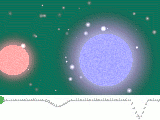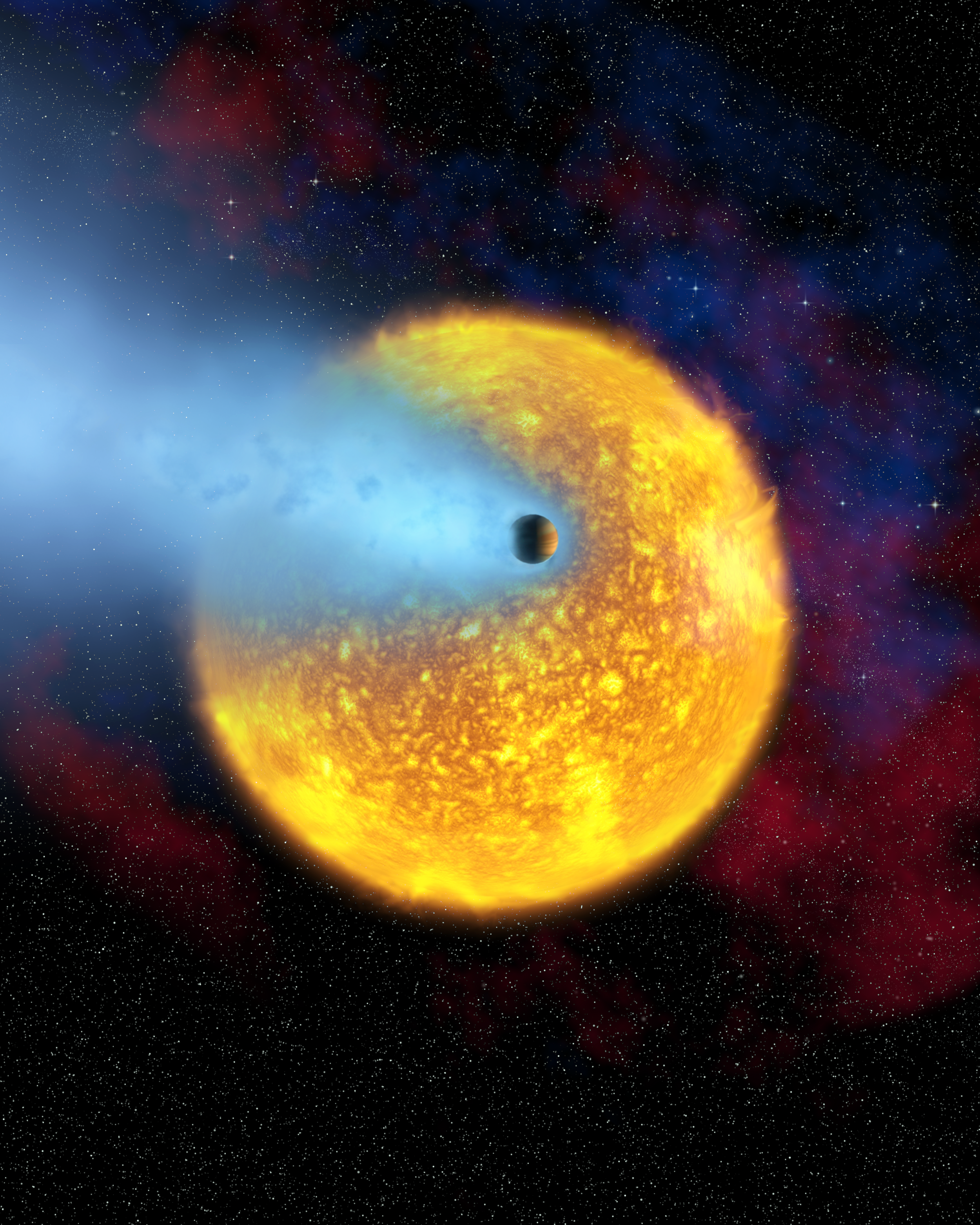List Of Hypothetical Astronomical Objects on:
[Wikipedia]
[Google]
[Amazon]



 Various unknown
Various unknown


 Various unknown
Various unknown astronomical object
An astronomical object, celestial object, stellar object or heavenly body is a naturally occurring physical entity, association, or structure that exists in the observable universe. In astronomy, the terms ''object'' and ''body'' are often us ...
s have been hypothesized throughout recorded history
Recorded history or written history describes the historical events that have been recorded in a written form or other documented communication which are subsequently evaluated by historians using the historical method. For broader world hist ...
. For example, in the 5th century BCE, the philosopher Philolaus defined a hypothetical astronomical object which he called the " Central Fire", around which he proposed other celestial bodies (including the Sun) moved.Marco Ceccarelli, ''Distinguished Figures in Mechanism and Machine Science'' (2007), p. 124.
Types of hypothetical astronomical objects
Hypothetical astronomical objects have been speculated to exist both inside and outside of theSolar System
The Solar SystemCapitalization of the name varies. The International Astronomical Union, the authoritative body regarding astronomical nomenclature, specifies capitalizing the names of all individual astronomical objects but uses mixed "Solar S ...
, and speculation has included different kinds of stars, planets, and other astronomical objects.
* For hypothetical astronomical objects in the Solar System, see: List of hypothetical Solar System objects
A hypothetical Solar System object is a planet, natural satellite, subsatellite or similar body in the Solar System whose existence is not known, but has been inferred from observational scientific evidence. Over the years a number of hypothetic ...
* For hypothetical stars, see: Hypothetical star
A hypothetical star is a star, or type of star, that is speculated to exist but has yet to be definitively observed. Hypothetical types of stars have been conjectured to exist, have existed or will exist in the future universe.
Types
Scientifica ...
* For hypothetical brown dwarf
Brown dwarfs (also called failed stars) are substellar objects that are not massive enough to sustain nuclear fusion of ordinary hydrogen ( 1H) into helium in their cores, unlike a main-sequence star. Instead, they have a mass between the most ...
s, see: List of brown dwarfs
This is a list of brown dwarfs. These are objects that have masses between heavy gas giants and low-mass stars. The first isolated brown dwarf discovered was Teide 1 in 1995. The first brown dwarf discovered orbiting a star was Gliese 229 B, al ...
* For hypothetical black holes, see: Hypothetical black hole
* For extrasolar moons, all of which are currently hypothetical, see: Extrasolar moon
An exomoon or extrasolar moon is a natural satellite that orbits an exoplanet or other non-stellar extrasolar body.
Exomoons are difficult to detect and confirm using current techniques, and to date there have been no confirmed exomoon detecti ...
* For stars, planets or moons whose existence is not accepted by science, see: Planetary objects proposed in religion, astrology, ufology and pseudoscience
There are a number of planetary objects proposed in religion, astrology, ufology and pseudoscience whose existence is not supported by scientific evidence.
Lilith
Lilith is a fictitious second moon of Earth, supposedly about the same mass as ...
and Stars proposed in religion Stars proposed in religion may include:
* Kolob, a star proposed in Mormon cosmology
* The Star of Bethlehem, the star that supposedly marked the birth of Christ
* Wormwood (star), a star said to fall to Earth in the Book of Revelation
* Seven Sun ...
* For hypothetical planets in fiction, see: Fictional planets of the Solar System
The fictional portrayal of the Solar System has often included planets, moons, and other celestial objects which do not actually exist in reality. Some of these objects were, at one time, seriously considered as List of hypothetical Solar System o ...
Hypothetical planet types
Hypothetical types of extrasolar planets include: , - ,Iron planet ]
An iron planet is a type of planet that consists primarily of an iron-rich core with little or no mantle. Mercury is the largest celestial body of this type in the Solar System (as the other terrestrial planets are silicate planets), but larger ...
, , A planet similar to Mercury (planet), Mercury that consists mainly of an iron core with little mantle.
, -
, Ocean planet , , A planet whose surface is covered entirely by deep oceans.
, -
, Superhabitable planet , , A terrestrial planet more habitable than Earth.
, -
, Tidally detached exomoon , , A planet that was originally a moon but has become gravitationally detached.
, -
, Toroidal planet
A toroidal planet is a hypothetical type of terrestrial planet, telluric exoplanet with a Torus, toroidal or doughnut shape. While no firm theoretical understanding as to how toroidal planets could Planetary formation, form naturally is necessari ...
, , A planet that is shaped like a torus
In geometry, a torus (plural tori, colloquially donut or doughnut) is a surface of revolution generated by revolving a circle in three-dimensional space about an axis that is coplanar with the circle.
If the axis of revolution does not tou ...
or doughnut.
, -
, Trojan planet
In astronomy, a co-orbital configuration is a configuration of two or more astronomical objects (such as asteroids, moons, or planets) orbiting at the same, or very similar, distance from their primary, i.e. they are in a 1:1 mean-motion resonan ...
, , A planet that orbits near the or Lagrange points of a more massive object.
, -
, Vitriolic planet , , A planet with significant amounts of acid.
References
{{Portal bar, Astronomy, Stars, Outer space, Mathematics, Science Astronomy